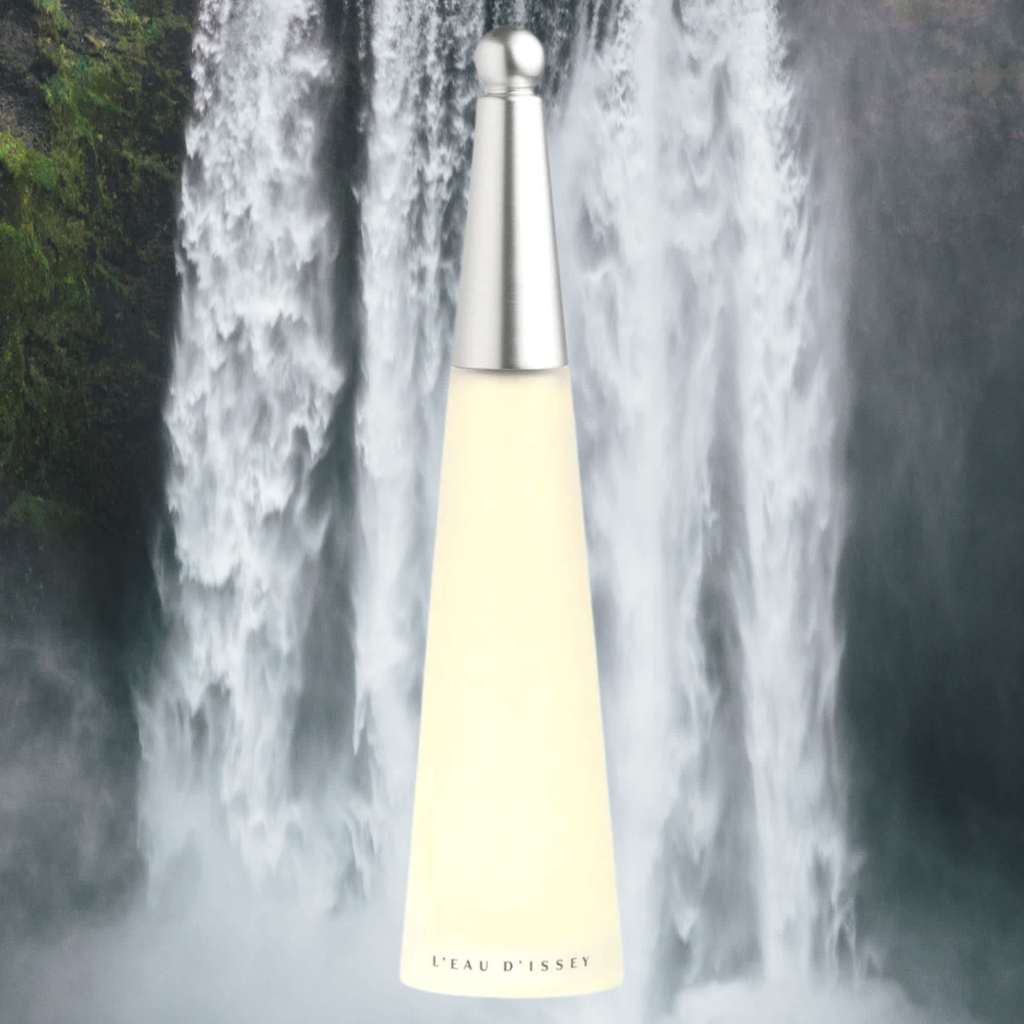Issey Miyake revolutionised the runways of the ‘90s with wrinkle-proof pleats and the belief that great clothing “worked in real life.” He also quietly changed the fragrance industry with his Eu de Toilette, L’Eau d’Issey – the first “transparent” scent. With his passing this month, it’s time to reflect on the emotional legacy of L’eau d’Issey.
L’eau d’Issey: The “Spring Water” Scent
In 1992 when Issey Miyake set about creating L’Eau d’Issey with cosmetics giant Shiseido, he said he wanted to create a fragrance “as clear as spring water”.
The 80s had been characterised by vampy, powerful fragrances like Christian Dior, Poison, Guerlain, Samsara and CoCo Chanel. These “parfums” were dripping in heavy florals like jasmine and tuberose, they oozed oud. These bestsellers were the fragrance equivalent of shoulder pads. Whether you were in the boardroom or at the bar, they announced your arrival.
With these aggressively sensual scents dominating the market, Issey Miyake proposed a fragrance that smelt like… water.
Shiseido took a gamble and L’eau d’Issey became an international best seller. To this day, a bottle of L’eau d’Issey sells every 14 seconds – and its success heralded the rise of the “transparent” fragrance, which became the defining scent of the ’90s.
What is a Transparent Fragrance?
Transparent fragrances give a “your skin, but better” feel. They settle on the skin like a veil rather than a cloak and are often described by perfume houses as evoking scents of the everyday, like fresh laundry, or of specific places — after all, the “scent” of air and water usually depends on the surrounding environment.
The key to many transparent fragrances like L’eau d’Issey is the use of ingredients like “calone” — a watermelon compound patented by Pfizer in 1955, which they happened upon while working on the development of benzodiazepines. When isolated, calone has nominal scent profile, but it adds a salty, atmospheric freshness when combined with floral and wood notes.
Master perfumer Jacques Cavallier brought Issey Miyake’s dream to life, and created the mist of a waterfall in a springtime forest, a blend of colone, freesia, rosewater, water peony and Lily-of-the-Valley. Light osmanthus, cedar and musk as base notes suggested the loamy damp of a forest floor, and Miyake’s vision was bottled.
Related: 10 Times Celebrities Wore Unforgettable Issey Miyake Looks
L’eau d’Issey’s Emotional Legacy
Cavallier told The Cut that his first scent memory was the smell of his mother’s rose water, and that the scent should be: “an eternal smell, something you knew before, from the day first smelled it and it reveals itself to you.”
Fragrance can also transport you from negative memories.
Issey Miyake was a survivor of Hiroshima. He rarely spoke about the experience, but in 2009 penned an essay for the New York Times, urging then-US President Obama to take action on Russia’s development of nuclear arms.
He described his experience as a seven-year-old: “When I close my eyes, I still see things no one should ever experience: a bright red light, the black cloud soon after, people running in every direction trying desperately to escape. I remember it all.” Miyake’s mother died three years after the bombing of radiation exposure. Miyake said he didn’t want to be considered the “designer who survived the atomic bomb”. Instead, he preferred “to think of things that can be created, not destroyed, and bring beauty and joy”.
Related: How Perfume Empowers Me to Explore My Gender Identity
Our sense of smell engages the limbic system, amygdala and hippocampus, the regions of the brain responsible for emotion and memory. As infants in the womb, our only fully developed sense is that of smell, and it remains our most developed sense until the age of ten. We also smell “in colour”. This is why negative experiences in childhood can turn us off scents, colours, or tastes for life. It’s unsurprising that Miyake who saw flashes of “red” and “black” created fragrances and clothes that projected the cool, crisp essence of an unpolluted natural world.
Ouds, civets and musks ground us in our bodies, they’re associated with aphrodisiac and emotional triggers, but for those who find them overwhelming (or even claustrophobic), transparent scents can make for a refreshing change.
Below are seven iconic”transparent” scents that have followed L’eau d’Issey .

